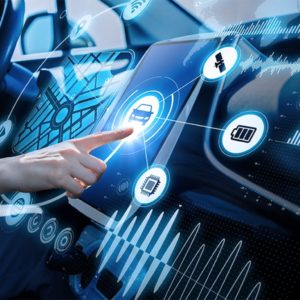Every year vehicles are getting smarter and safer with built-in technology created to decrease the chance of a collision. Some cars use advanced technology to steer, brake and even drive themselves. Car accident prevention technology is ever-evolving to keep drivers, passengers, and pedestrians safer on the road. Here are some of the newest types of accident prevention technology and how they are used to lower your chances of a collision.
1. Autonomous Emergency Braking
Since the mid-80s, some vehicles have been equipped with Anti-lock Braking Systems or ABS, which allows the vehicle to be steered safely while braking hard. Since 2000, ABS is mandatory on all new vehicles made in the United States. The only problem with ABS is that it still relies on you, the driver, to physically hit the brakes in the first place.
The newest advancement in braking technology is Autonomous Emergency Braking or AEB. Also called Automatic Emergency Braking or Auto Emergency Braking, this technology uses the same radar systems as your cruise control to judge the distance between you and the vehicle in front of you. Since the system is computer controlled it can react faster than you, it can instantly put on the brakes before you have a chance to react to a situation. When combined with ABS, you now have maximum stopping power within an instant.
While AEB is not yet mandatory on all vehicles, some car manufacturers are making this feature standard across all of their newest models.
2. Lane Departure and Warning and Prevention Systems
Lane Department Warning or LDW is a prevention system that alerts you when you are drifting out of your lane. LDW systems will actually attempt to steer your vehicle back into your own lane. LDW systems will alert you, by dashboard lights, beeping sounds or steering wheel vibrations, to let you know that you are drifting out of your lane and into another.
LDW systems work using a camera to monitor lane markings and detect when you’re drifting out of your lane. While this is not a system available on all vehicles, LDW systems are becoming a standard feature on nearly all newly made models.
3. Blind Spot Warning System
A blind-spot warning or BSW system uses radar technology to detect when another vehicle is in your blind spot. BSW systems give audio and visual alerts to let you know if it is unsafe to merge or switch lanes and may also alert you of a potential hazard when you turn on your turn signal.
4. Cross-Traffic Alerts
Front and rear cross-traffic alert systems alert the driver of vehicles approaching from the side. These systems work well when backing up or at intersections and will give an audible warning if an object outside of the rear camera’s view approaches the vehicle.
5. Electronic stability control
Electronic Stability Control or ESC is a system that prevents vehicles from sliding out of control as a result of over-steering by applying the brakes or reducing engine power. In the event of a driver losing control of the vehicle, the ESC would take over. ESC is standard in vehicles made after 2012, although different car companies may call it by another name. Electronic Stability Program, Advance Trac and Stabilitrak are a few examples of ESC systems.
High tech sensors, the vehicle’s central computer system, and mechanical actions work together in the ESC to assist in driving safely. These systems lower the risk of single-vehicle crashes by half.
Other Types of Car Accident Prevention Technology
Backup cameras, LED headlights, even your hands-free voice control are all examples of accident prevention technology. Backup cameras can be purchased aftermarket if one does not come with your vehicle. LED headlights are brighter and last longer than traditional halogen bulbs, making them safer and more efficient. Hands-free technology lowers the risk of distracted driving, helping you make calls, send texts and look up directions without having to touch your smartphone.





